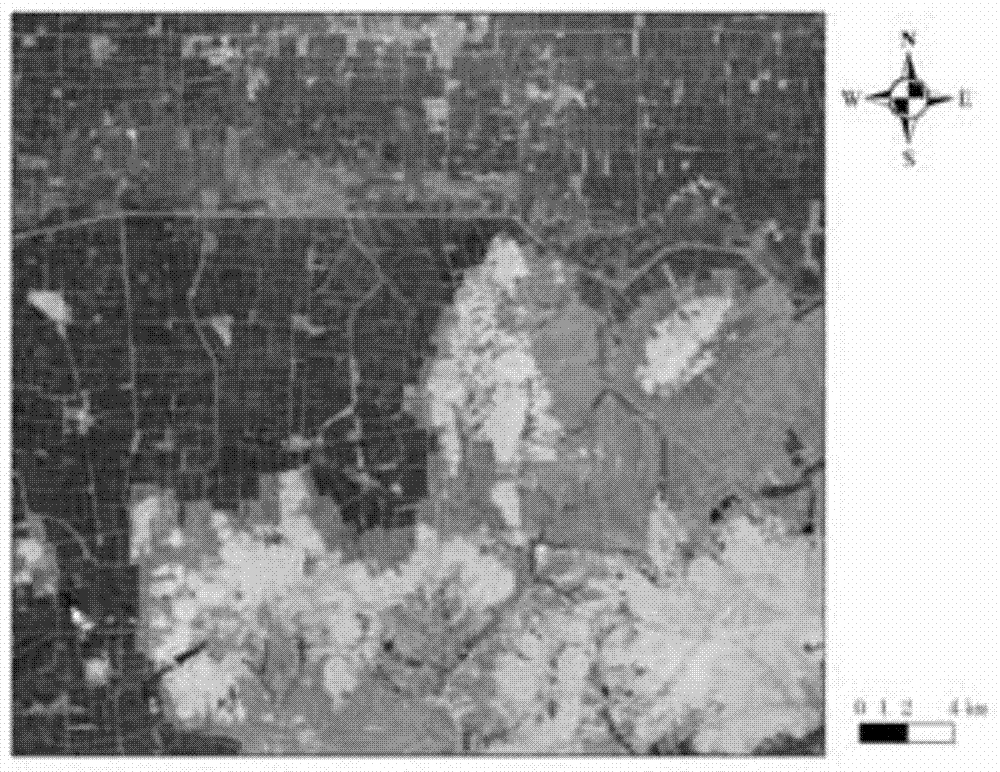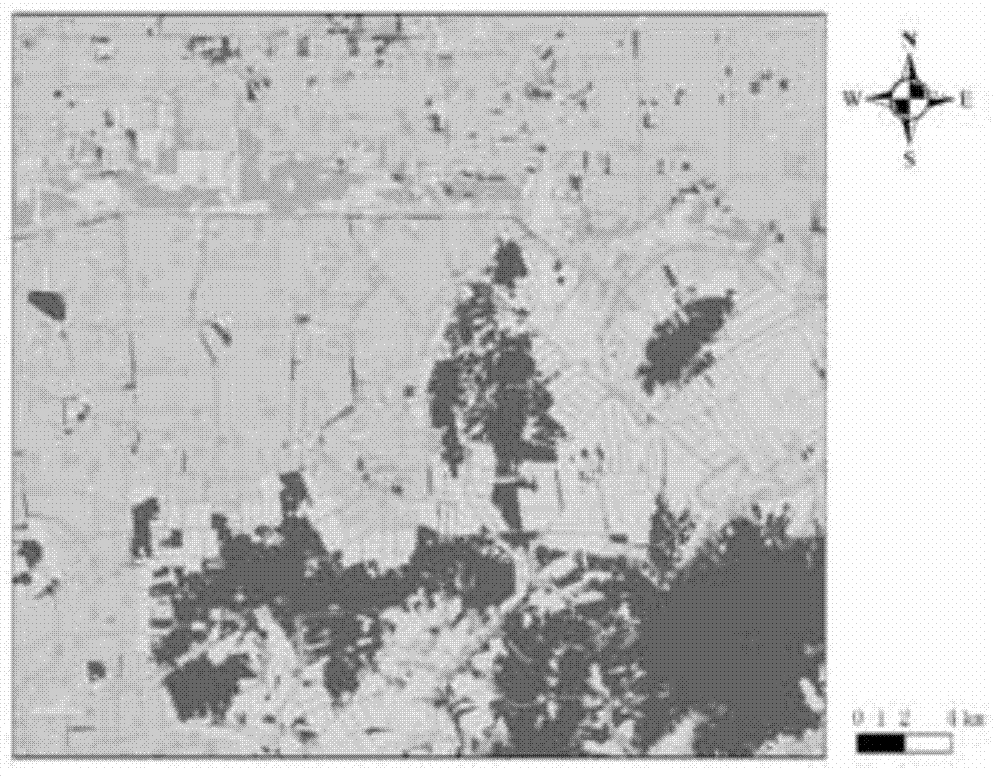Paddy field and dry land distinguishing method based on oriented objects and medium-resolution-ration remote sensing image
An object-oriented, remote sensing image technology, applied in image analysis, image enhancement, image data processing, etc., can solve the problem of inaccurate extraction of paddy field and dry land spatial information, and achieve the effect of clear geographic meaning and high precision
- Summary
- Abstract
- Description
- Claims
- Application Information
AI Technical Summary
Problems solved by technology
Method used
Image
Examples
specific Embodiment approach 1
[0023] Specific implementation mode one: the method for distinguishing paddy fields and dry areas based on object-oriented and medium-resolution remote sensing images in this embodiment is carried out according to the following steps:
[0024] Step 1: Perform orthorectification and geometric fine correction on Landsat-8 OLI data;
[0025] Step 2: Carry out multi-layer and multi-scale segmentation on the Landsat-8 OLI image to obtain a series of segmentation units. Each segmentation unit is composed of spatially adjacent pixels with a homogeneity of more than 80%. Each segmentation unit as an object;
[0026] Step 3: Extract the spectral features, texture features, shape features and structural features of each object obtained in step 2, and use the hue features derived from the HIS transformation to calculate the arithmetic features of the object;
[0027] Step 4: Using the spectral features, texture features, shape features, and structural features obtained in Step 3, determ...
specific Embodiment approach 2
[0032] Embodiment 2: The difference between this embodiment and Embodiment 1 is that in step 4, objects whose arithmetic characteristics obtained in step 3 are less than or equal to 0.37 are removed to obtain cultivated land objects. Others are the same as in the first embodiment.
specific Embodiment approach 3
[0033] Embodiment 3: This embodiment differs from Embodiment 1 or Embodiment 2 in that in step 5, objects whose arithmetic characteristics are less than or equal to 0.89 are extracted to obtain paddy field objects. Others are the same as those in the first or second embodiment.
PUM
 Login to View More
Login to View More Abstract
Description
Claims
Application Information
 Login to View More
Login to View More - R&D
- Intellectual Property
- Life Sciences
- Materials
- Tech Scout
- Unparalleled Data Quality
- Higher Quality Content
- 60% Fewer Hallucinations
Browse by: Latest US Patents, China's latest patents, Technical Efficacy Thesaurus, Application Domain, Technology Topic, Popular Technical Reports.
© 2025 PatSnap. All rights reserved.Legal|Privacy policy|Modern Slavery Act Transparency Statement|Sitemap|About US| Contact US: help@patsnap.com


